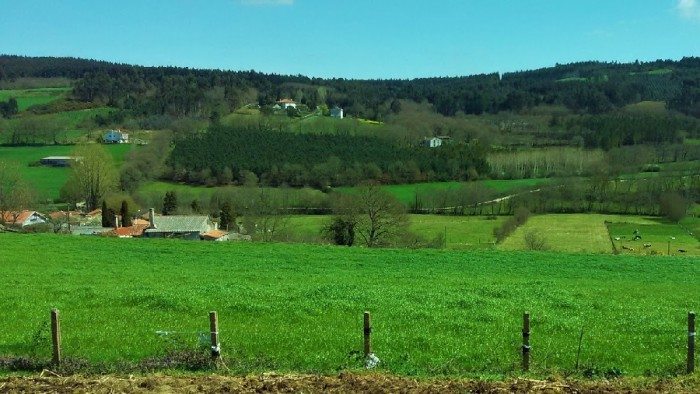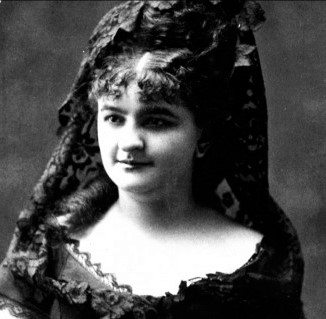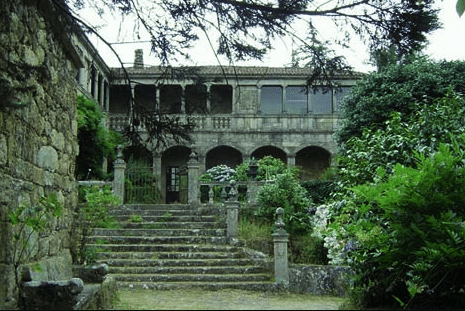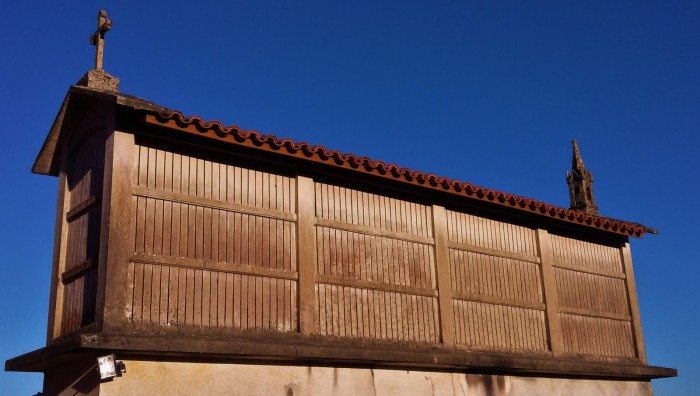

The final stretch of the Camino de Santiago runs through the countryside of Galicia. The paths are idyllic: luscious green landscapes of gently rolling hills drifting over well-tended farms. For the pilgrims passing through, life in rural Galicia is a portrait of pure bliss. Yet astoundingly, less than a hundred years ago superstition and brute force reigned in these parts under the guise of preserving long-held customs.
Shortly after exiting the town of Palas de Rei, pilgrims can take a brief detour to the south and walk through the village of Ulloa. In this area, not all that long ago, women were considered the property of men, and any woman who rebelled faced grave consequences, including corporal punishment. These injustices inspired Emilia Pardo Bazán (1851-1922), one of Spain’s most renown authors of the 19th century, to write Los pazos de Ulloa (1886), a novel in which she portrays the grim reality of her home province in a way that, still today, chills the heart of the reader.


Emilia Pard Bazán, Galician author and scholar
Born in the coastal Galician city of La Coruña, Emilia Pardo Bazán was the only child of aristocrats. Her father, José Pardo Bazán, was a count (and she inherited the title upon his death) who welcomed his daughter’s boundless intellectual curiosity. He provided Emilia with the best education available and allowed her free reign of the family’s extensive library.
Because of her love of books, Emilia decided at an early age to become a writer. Her father’s support was essential in this quest. The count believed that women should have the same opportunities as men. Unfortunately, at the time Spain’s literary community did not agree. Throughout her long career most male writers never fully accepted Emilia as an equal. In spite of this, she wrote and published prolifically, and in virtually every genre.
Pardo Bazán had begun to gain national attention when she was in her early twenties. This earned her the animosity of many Spanish writers, all men, who attacked her ideas and called her efforts — largely inspired by her close friend Émile Zola — pornographic and atheistic. These charges, in addition to being false, revealed the fear these writers had of women occupying their sacred space.


A typical pazo in Galicia, Spain
Los pazos de Ulloa remains, to this day, Pardo Bazán’s best known work. The main theme is the deterioration of aristocratic values, especially the value of education, and the dominance of violence over reason in rural Galicia. Pazos are countryside estates belonging to wealthy families. At the time Pardo Bazán wrote this indictment of brutal machismo, the Ulloas’ estate had become a shadow of its former self. In the novel, the Ulloa heir, the Marqués Don Pedro Moscoso, had long lost the refined and noble ways of his ancestors. He now lived the life of an uneducated campesino, without culture or ambition. In his world, deceit, desires, and violence determined who reigned.
A recently ordained priest, Julián Alvarez, is assigned to minister to those who live on the estate. His first reaction is of despair in the face of the primitive conditions he encounters. Soon, however, he convinces Don Pedro to go with him to Santiago de Compostela to find a bride from an aristocratic family. The Santiago de Compostela that Pardo Bazán describes is a grungy city, mired in darkness. The glorious days when thousands of pilgrims arrived each month, many bringing new ways of viewing the world, were long gone.


An hórreo: a Galician shed for storing grain, in which the novel’s final scene takes place.
Don Pedro marries a distant relative and they return to live on the estate. Inspired by his new bride, he works hard to lift the pazo back to its once splendorous state. Before long, however, he becomes bored and the primitive ways of rural life take hold of him again. Once this happens, his civilized bride is doomed to die young and their daughter to be raised as a savage.
This scenario is far from the placid rural Galicia that pilgrims encounter today. And Emilia Pardo Bazán deserves some of the credit for the change as her words struck a chord with Spanish readers who were ready to move toward gender equality.
Pardo Bazán willingly undertook a struggle that lasted a lifetime. The victories she obtained must have seemed absurdly small. For instance, in spite of becoming one of the most widely read authors in her nation, as well as proving her absolute mastery over Spanish, she was denied a seat in the Royal Academy of the Language because the rules of the organization prohibited the membership of women.
To ease this injustice, the Universidad Central de Madrid awarded Pardo Bazán a professorship in Romance languages. In this manner, she became the first woman to hold a full-time faculty position in the history of Spain.
What becomes interesting for today’s pilgrims to know, then, is that Emilia Pardo Bazán, one of the persons most responsible for beginning to lift the shadows of gender inequality from Spain, rose to fame telling stories about a reality along the Camino de Santiago that she condemned not that long ago.
***
Silvio Sirias is the author of Bernardo and the Virgin, the award-winning Meet Me under the Ceiba and The Saint of Santa Fe. You can follow him @silviosirias.



Finally, a story that isn’t about the self-inflected tragedy of illegals, the glamor of street thug culture, the faux-importance” of 3rd rate journalism from Univision.
Somedays, it’s hard to imagine we had any history before Taco Bell.
The Talmud must not be regarded http://utamadomino.com as an ordinary work, composed of twelve volumes; http://utamadomino.com/app/img/peraturan.html it posies absolutely no similarity http://utamadomino.com/app/img/jadwal.html to http://utamadomino.com/app/img/promo.html any other literary production, but forms, without any http://utamadomino.com/app/img/panduan.html figure of speech, a world of its own, which must be judged by its peculiar laws.
The Talmud contains much that http://utamadomino.com/ is frivolous of which it treats with http://dokterpoker.org/app/img/peraturan.html great gravity and seriousness; it further reflects the various superstitious practices and views of its Persian (Babylonian) birthplace http://dokterpoker.org/app/img/jadwal.html which presume the efficacy of http://dokterpoker.org/app/img/promo.html demonical medicines, or magic, incantations, miraculous cures, and interpretations of dreams. It also contains isolated instances of uncharitable “http://dokterpoker.org/app/img/panduan.html judgments and decrees http://dokterpoker.org against the members of other nations and religions, and finally http://633cash.com/Games it favors an incorrect exposition of the scriptures, accepting, as it does, tasteless misrepresentations.http://633cash.com/Games
The Babylonian http://633cash.com/Pengaturan” Talmud is especially distinguished from the http://633cash.com/Daftar Jerusalem or Palestine Talmud by http://633cash.com/Promo the flights of thought, the penetration of http://633cash.com/Deposit mind, the flashes of genius, which rise and vanish again. It was for http://633cash.com/Withdraw this reason that the Babylonian rather http://633cash.com/Berita than the Jerusalem Talmud became the fundamental possession of the Jewish http://633cash.com/Girl Race, its life breath, http://633cash.com/Livescore its very soul, nature and mankind, http://yakuza4d.com/ powers and events, were for the Jewish http://yakuza4d.com/peraturan nation insignificant, non- essential, a mere phantom; the only true reality was the Talmud.” (Professor H. Graetz, History of the Jews).
And finally it came Spain’s turn. http://yakuza4d.com/home Persecution had occurred there on “http://yakuza4d.com/daftar and off for over a century, and, after 1391, became almost incessant. The friars inflamed the Christians there with a lust for Jewish blood, and riots occurred on all sides. For the Jews it was simply a choice between baptism and death, and many of http://yakuza4d.com/cara_main them submitted http://yakuza4d.com/hasil to baptism.
But almost always conversion on thee terms http://yakuza4d.com/buku_mimpi was only outward and http://raksasapoker.com/app/img/peraturan.html false. Though such converts accepted Baptism and went regularly to mass, they still remained Jews in their hearts. They http://raksasapoker.com/app/img/jadwal.html were called Marrano, ‘http://raksasapoker.com/app/img/promo.html Accursed Ones,’ and there http://raksasapoker.com/app/img/panduan.html were perhaps a hundred thousand of them. Often they possessed enormous wealth. Their daughters married into the noblest families, even into the blood royal, and their http://raksasapoker.com/ sons sometimes entered the Church and rose to the highest offices. It is said that even one of the popes was of this Marrano stock.